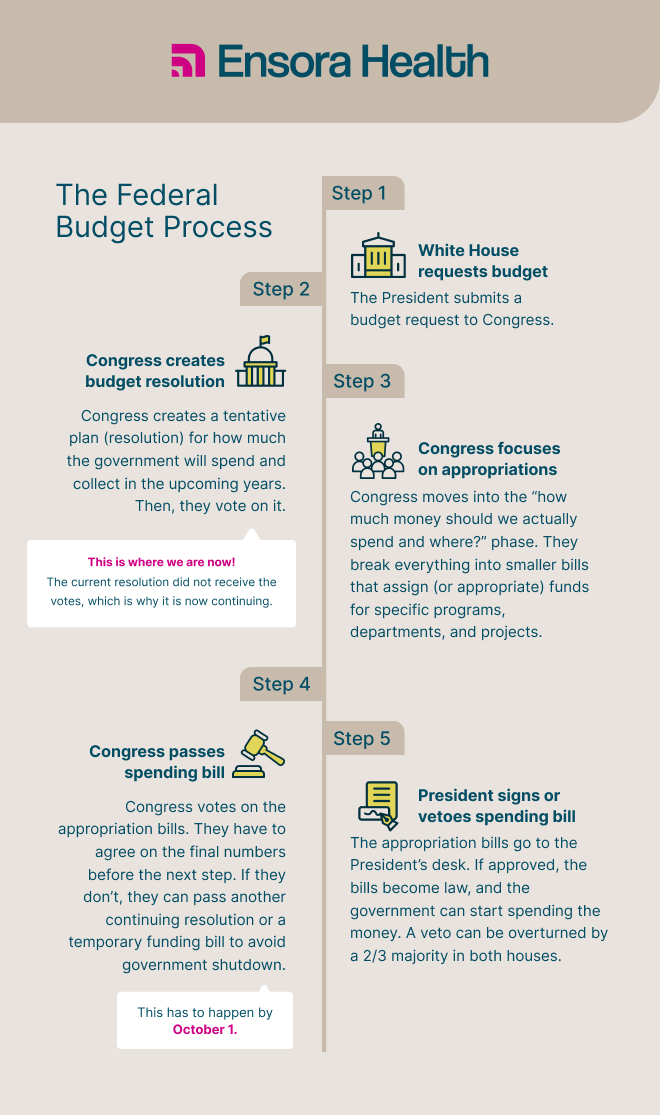There’s no denying it: we are living in uncertain times. The majority of Americans—regardless of personal circumstances, opinions, or characteristics—believe that our country is not doing as well as we would like. Every day, the news cycle and social media bring us concerning and often conflicting messages that may affect our livelihoods and workspaces. This can feel overwhelming, especially when all you want to do is make your business thrive, help your clients heal, and stay sane while doing all of this.
A significant concern for healthcare professionals like you right now is the fate of Medicaid, and the impact potential budget cuts could have on your practice and clients. These programs are incredibly important to many Americans, and it’s not surprising that this issue is both worrying and contentious. Politicians on both sides of the aisle do not seem to be prioritizing clarity or transparency on this issue, leaving us to wade through the muck of misinformation and an onslaught of confusing messaging all on our own.
My goal today is to share a simple and fact-based explanation of this situation, and to provide you with a practical understanding of what all of this can mean for you as a therapist, clinician, or practice owner. Come along! I promise—you may be pleasantly surprised that the situation isn’t as dire as it may seem!
Why is Medicaid at risk?
In February, the House of Representatives approved a Budget Resolution that told the Energy & Commerce Committee (the group in charge of funding for Medicare and Medicaid) to cut at least $880 billion from the federal deficit between 2025 and 2034. To figure out if this was doable, the Government Accountability Office (GAO) and the Congressional Budget Office (CBO) looked into the issue. Both the GAO’s report and the CBO’s memo concluded that there’s no way to hit that giant number just by fixing improper payments. To get there, cuts to Medicaid would be needed if Medicare were to be left untouched.
Understandably, this is where much of the public concern stems from. However, we need to remember that there are many things that still need to happen for Medicaid coverage to be impacted. Changes to Medicaid are far from certain at this point. Let’s look at this big-picture view of the federal budget process:

Yes, Congress has created its budget resolution (Step 2). And if it were to continue through the federal budget process as it exists now, then Medicaid would, indeed, be at risk. BUT! There’s a long road ahead, and many things can shift in the next few months that may end up sparing Medicaid from any cuts.
Already, members of Congress couldn’t get on the same page to pass this spending bill earlier in March, so it became a continuing resolution. This means that nothing will be finalized or acted upon until October 1st. Even then, it is possible that another continuing resolution will be passed – meaning nothing will change until the spending bill passes through budget committees, appropriations, and finally presidential signature. Lots of details will still change between now and then, and there is good reason to believe that Medicaid may largely be spared.
While Medicaid, which serves low-income citizens and children, may be more vulnerable politically, it is also a very popular program. Plenty of Congressional Republicans and even the White House have spoken out against cutting its funding.
This is why I am not panicking about the budget resolution that seems to threaten these programs. In fact, I feel confident in saying that we will not be seeing any cuts to Medicaid this year or even next year.
What does this all mean for you?
So, let’s talk about the practical implications of all of this. What are some things you can do on your end to make sure your practice continues to thrive in harmony despite the political turbulence of our time?
Business as usual
Until there is a solid reason to suspect that federal funding is going to impact your practice and clients, continue to do everything that is already making you successful. You have worked hard to establish routines and workflows to make your practice efficient, you have found tools and resources to simplify your work life, and you have built supportive networks with clients and colleagues.
There may come a time to consider adjusting your processes in response to sociopolitical changes but now is not that time. Be patient, stay vigilant, and keep on keeping on.
Stay informed
Keeping up with relevant news is hard, especially when we’re already overwhelmed by the demands of running a business. However, it is important to stay in the know about things coming down the pipeline which may affect your practice and clients.
First, find a handful of reliable sources that do a good job of simplifying and explaining legislature and regulatory changes. Here are a few of my favorites:
There are also individuals who are dedicated to understanding and translating complex regulations and laws into accessible messaging for the public. For example, I am passionate about posting information on mental health parity and holding health plans accountable for their reimbursement practices for my LinkedIn followers. Feel free to listen in!
Another great person to follow is Chuck Ingoglia, the president and CEO of the National Council for Mental Wellbeing. Check out his recent post in support of Medicaid!
Finally, if you haven’t yet, look into networking societies that are relevant to your practice, such as:
These are just a few common ones, but you can easily find one that fits your needs. Organizations like these work to distill relevant information for members, providing support and community in times of uncertainty.
Prepare for audits
There is a possibility that the push to reduce government spending by targeting improper payments will cause an increase in provider audits. So, it’s important to make sure your practice’s operations are in tip-top shape. Here are some tips:
- Keep all your records, like client files, billing info, and compliance paperwork, organized and up to date.
- Review your processes regularly to spot any mistakes or areas where you’re not following the rules and fix them as soon as possible.
- Make sure everyone on your team knows the latest guidelines and gets proper training to avoid slip-ups.
We’re in this together!
I know that right now, our nerves and brain space are stretched thin, and we’re all doing our best. The ever-changing situation in the world outside our office can feel daunting and uncontrollable. Remember — you are the master of your business, and you can create and celebrate harmony within your four walls, no matter what happens out there.
My colleagues at Ensora Health and I are excited to help you stay in the know and remain confident in your practice. Stay tuned for an exciting quarterly webinar and monthly blog series, keeping you informed on the latest regulatory changes and compliance updates. Don’t miss out—follow us on social media for all the details and updates!
Still feeling uneasy navigating these turbulent times? It might be helpful to speak with an expert about ways to optimize your workflows and manage reimbursements. We are here for you – reach out today!

Amber is the Chief Compliance Officer of Ensora Health which includes monitoring healthcare policy and operationalizing regulatory compliance. Prior to joining Ensora Health, Amber was the Head of Regulatory Compliance & Regulatory Affairs for R1 RCM, a healthcare technology and service provider. Additionally, Amber served as the Compliance Officer for Jackson Memorial & Holtz Children’s Hospital in Miami, Florida. She began her career as a regulator for the U.S. Department of Health & Human Services after graduating magna cum laud from University of Minnesota Law School.






